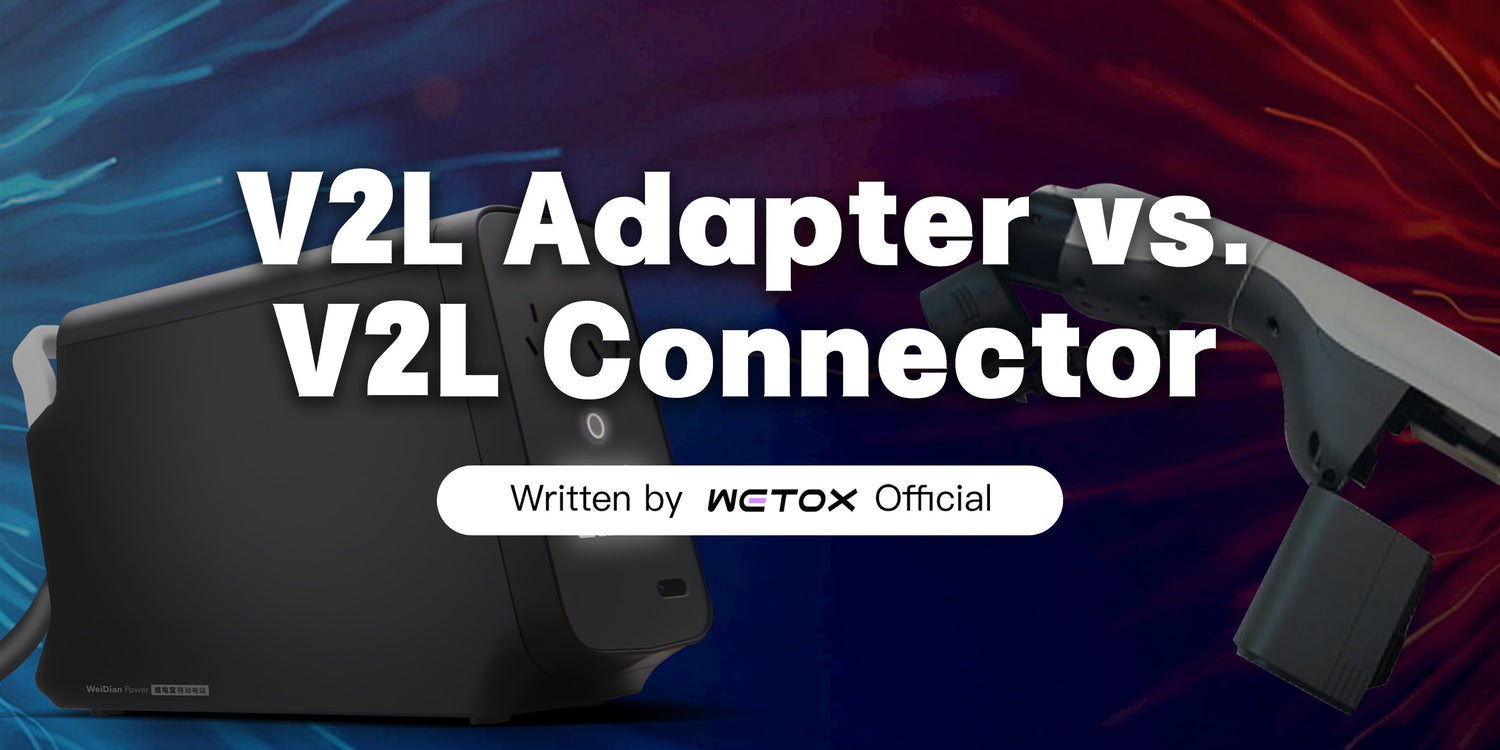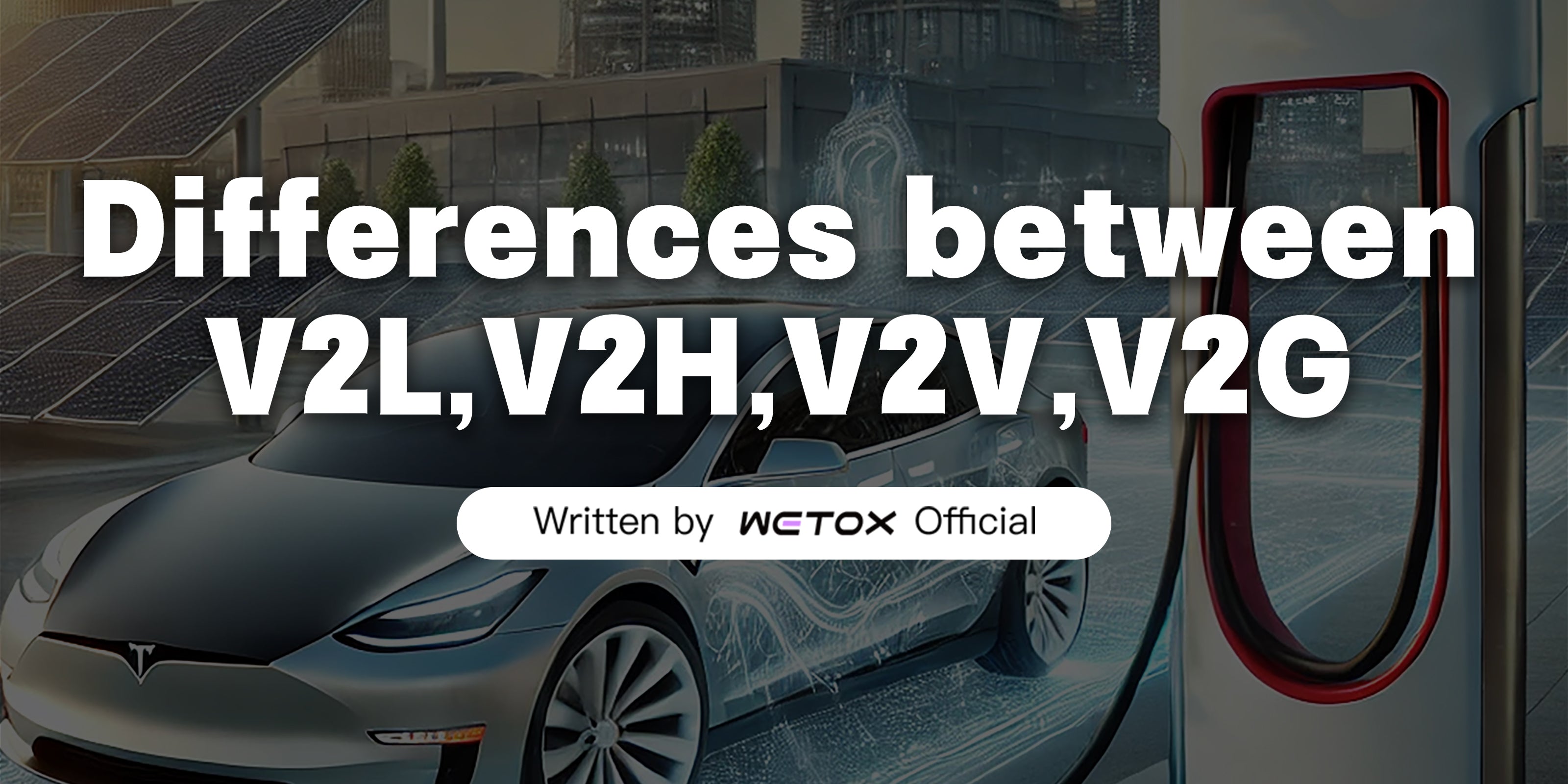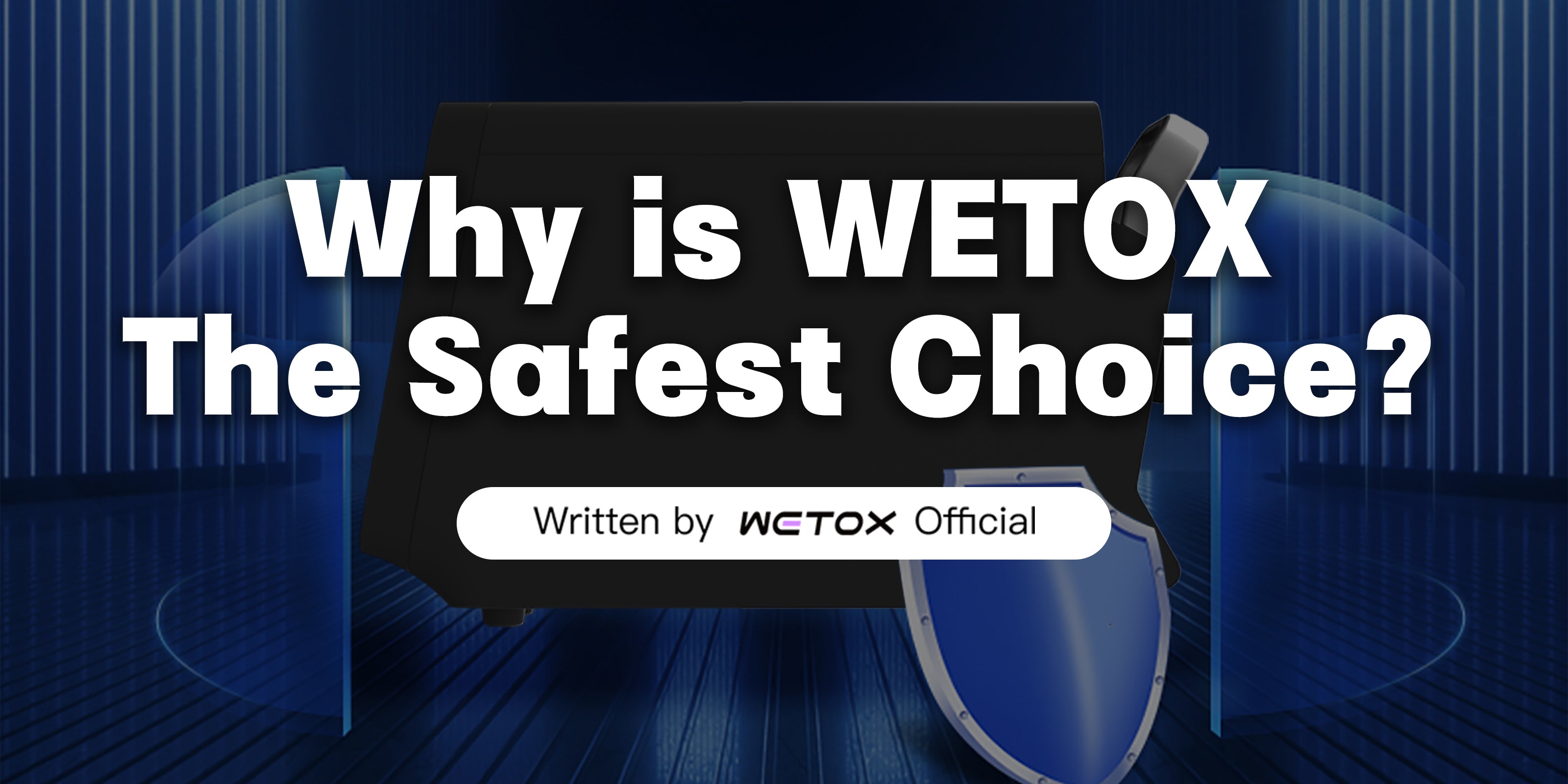Recently, multiple online shopping platforms have started selling a device called the NACS V2L connector. It features a connector that fits Tesla’s charging port and is priced surprisingly low. However, many Tesla owners who purchased it quickly discovered that it doesn’t work.
What’s the catch? This device isn’t actually designed for Tesla vehicles. Instead, it’s intended for Kia, Hyundai, and other brands that have adopted the NACS charging standard.

In a previous article, WETOX explained that vehicle-to-load (V2L) works by converting DC power into AC power.
Take the Kia EV6 as an example—its built-in bidirectional OBC module enables V2L using a J1772 AC discharge connector. When future models transition to the NACS port, a NACS AC discharge connector will be required instead.
Despite differences in design, these discharge connectors serve the same purpose—they simply adapt the vehicle’s port into a standard power outlet. Since they don’t involve communication protocols or inverter circuitry, they are compact, inexpensive, and easy to use.
Unfortunately, Tesla vehicles without a bidirectional OBC cannot take advantage of such connectors.

The WETOX PowerShare D2 is specifically designed for V2L in Tesla Model 3, Model Y, Model S, and Model X. It draws DC power directly from the vehicle’s port and converts it into AC power through an advanced inverter built into the device.
While Tesla’s DC discharge adapter and Kia’s AC discharge connector may serve the same purpose of V2X capabilities, they are fundamentally different products. DC discharge devices for Tesla require intricate and precise electronic components within the unit, leading to significantly higher production costs and larger physical size compared to Kia’s simpler AC discharge connectors.
Despite these challenges, WETOX remains committed to providing Tesla owners with the most advanced, high-quality, and cost-effective DC discharge adapters on the market.

The NACS standard integrates both AC and DC charging into a single design, which may be confusing to readers. To make it clearer, let’s use Europe’s CCS2 standard or China’s GB/T standard for comparison:
In Europe, the fast-charging connector is called CCS2, while the slow-charging connector is known as Type-2 (similarly, in North America, the CCS1 standard features the J1772 connector for slow charging). In China, the GB/T standard separates the DC fast-charging port from the AC slow-charging port.
Only vehicles with built-in bidirectional OBCs can use Type-2, J1772, or GB/T AC connectors for V2L.Vehicles like Tesla, which lack a bidirectional OBC, must use CCS2 or GB/T DC fast-charging connectors to draw power.
The NACS connector does not distinguish between DC fast charging and AC slow charging externally, but the internal principles remain the same. Essentially, the vehicle still has separate DC fast-charging and AC slow-charging systems, but these are unified into a single port presented to the user.

After reading this article, we believe you now understand the difference between DC discharge adapters and AC discharge connectors. If you're a Tesla owner, WETOX PowerShare D2 is the right choice for your needs.




1 comment
Ken
Is it possible add DC output mode too? We could use it to connect it back to power wall at home with MC4 connector act as solar panel output, bypass Tesla’s restrictions.
Leave a comment
This site is protected by hCaptcha and the hCaptcha Privacy Policy and Terms of Service apply.